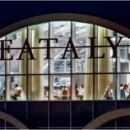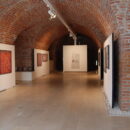
Hunting for investors
In Sweden, investments in mutual funds are like tramway tickets. In Romania, only three out of 100 active persons deals with these instruments. Maybe this is the reason why, in Romania, there are banks that have private banking departments but these departments actually open deposits. Very few of them make investments or own what we call “money managers”.
How does the financial services market look like for the Romanian wealthy clients? It depends on the angle we look at things and on the amount of money available for investments. If we are talking about mutual funds and we compare the situation with the period before the economical crisis, things are looking promising; very promising. If we are talking about the more sophisticated funds that deal with more money and we take a look at the whole region, we are still behind. “The market looks good from the perspective of the post-2008 crisis, and is, from the view point of the mutual funds industry, the best year in history. While many sectors of the financial market, and not only, have decreased or, at best, have stabilized, we have grown like Prince Charming”, points out Dragoș Neacșu, CEO of Erste Asset Management. The entire local mutual funds industry has grown its management assets 17 times during the years following the crisis.
More precisely: from 220 million Euros – at the end of 2008 – to over 3, 8 billion Euros – in the middle of this year. And, from the perspective of Erste Asset Management, things are looking even better. During the same period of time, the department has become a market leader, having a 42% share and 1, 6 billion Euros. Yet, this inventory with optimistic figures has also some shades of grey.
“The greatest problem of the Romanian private banking market is that we don`t have some clear data on the size of the retail segment. We don`t know how many clients with financial assets over 200.000 Euro are in the system, how many accounts there are. We don`t have aggregated data, we only have compiled information”, explains Răzvan Furtună, Head of Erste Private Banking at BCR. That is the division that brings together the “de la crème” of clients and the individuals with significant incomes and investing potential. The retail segment is the nursery feeding both the asset managers and also the private banking managers. It is one of the reasons why the hunting for investors is a fierce competition. According to Furtună, the unanimous opinion of the market experts is that the local private banking market is somewhere between 5 and 7 billion Euros, having an indefinite number of clients. It is, more precisely, the amount of the accounts that have private banking potential.
In this competition of attracting clients with money, BCR has developed a simple and very logical mechanism: the bank targets clients for mass-market, to bring them to the mass-affluent area and then to private banking. A client who has a portfolio between 40.000 Euro and 200.000 Euro is part of the mass-affluent area. In other words, the institution applies the principle of “raising the clients since they are small”. Răzvan Furtună says that many young and dynamic entrepreneurs who own promising businesses are moving from mass-market to private banking within BCR. And they matter a great deal in sketching the bank`s “high-end” income client`s profile. “Our clients are focused in the age group of 50-55 years old, they have university education and their incomes are generated mainly from entrepreneurship. Their most common preferences for spending their free, although limited, time are: theater, music, arts in general, together with sports”, says Magda Săndulescu, Executive Director, Retail Segment Management Division, the bank`s private banking client.
Regarding those who want to use the asset management service, the youngest clients of the financial institution are babies who receive, when baptized, a financial asset, but also 100 years olds. “The average is around 40-45 years old, usually men – their share is around 52% – with at least college education and living in a medium to large city. In certain age groups, the women are in larger numbers. The portfolio`s average value is 25.000 lei and our clients are between mass-market and mass-affluent”, said Dragoș Neacșu. Regarding the types of investments, things are similar with other fields of activity in Romania: conservative and slightly risky. This is due to the low financial education which becoming more substantial with the aid of the bankers. According to Magda Săndulescu, in the last years, the Romanian private banking market has made some significant steps towards investment diversification. Despite the fact that right now the market is orientated towards conventional investments, the delay against similar markets from Western Europe is being recovered rapidly” if we were to take into consideration only the portfolio owned by the Erste Private Banking clients for the last five years – 90% was made of bank deposits; right now, 70% of it is made of investments,” explains the Head of Retail Division in BCR.
Dragoș Neacșu believes that mutual funds should be present in the portfolio of every Romanian household, at least 10-20%. With regards to the private banking clients, the bank wants to replace, starting with this year, conventional investments in government bonds with the “You Invest” funds, launched in March. On the other hand, Răzvan Furtună reminds us that BCR bankers are not bankers, they are not advisors, but they are “executives”. They manage the portfolio which the client has created. “The advisers draw a portfolio that is, usually, updated and is endorsed by the vision of our group regarding the perspectives of each of the assets. It is a plentiful and complex model that many would like to have; we plan on delivering it to the market next year”, said the Private Banking responsible. And, if we were to consider that the bank`s experts were sufficiently open to create an investment solution only for agricultural products – following the demand of a customer- the limits can be set only by the market`s conditions.









